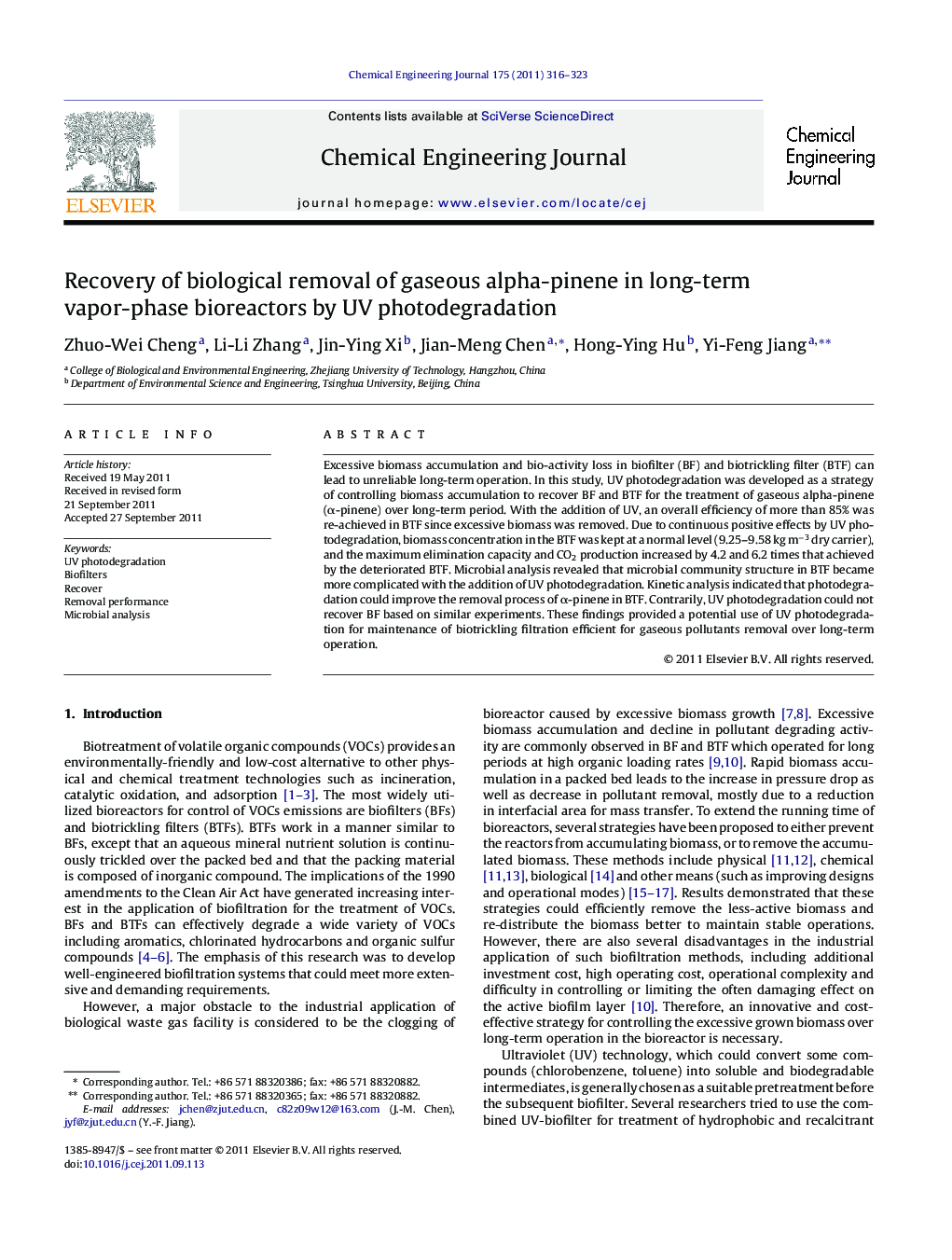| کد مقاله | کد نشریه | سال انتشار | مقاله انگلیسی | نسخه تمام متن |
|---|---|---|---|---|
| 150987 | 456460 | 2011 | 8 صفحه PDF | دانلود رایگان |

Excessive biomass accumulation and bio-activity loss in biofilter (BF) and biotrickling filter (BTF) can lead to unreliable long-term operation. In this study, UV photodegradation was developed as a strategy of controlling biomass accumulation to recover BF and BTF for the treatment of gaseous alpha-pinene (α-pinene) over long-term period. With the addition of UV, an overall efficiency of more than 85% was re-achieved in BTF since excessive biomass was removed. Due to continuous positive effects by UV photodegradation, biomass concentration in the BTF was kept at a normal level (9.25–9.58 kg m−3 dry carrier), and the maximum elimination capacity and CO2 production increased by 4.2 and 6.2 times that achieved by the deteriorated BTF. Microbial analysis revealed that microbial community structure in BTF became more complicated with the addition of UV photodegradation. Kinetic analysis indicated that photodegradation could improve the removal process of α-pinene in BTF. Contrarily, UV photodegradation could not recover BF based on similar experiments. These findings provided a potential use of UV photodegradation for maintenance of biotrickling filtration efficient for gaseous pollutants removal over long-term operation.
Comparisons of ECs and CO2 productions between the subsequent biofilters revealed that UV photodegradation could recover BTF for stable long-term continuous operation. Owing to the positive effects by photodegradation, the ECs and CO2 productions could increase by nearly 4 and 6 times that achieved by the deteriorated BTF. However, the performance of BF was starkly different. With the compaction of packing material and the formation of higher pressure drop, the removal capabilities decreased by large extent, indicating that BF over long-term operation could not be recovered by the addition of UV. It was also proposed that the structure of BF and the toxic effect of accumulated ozone might prevent the recovery.Figure optionsDownload as PowerPoint slideHighlights
► UV photodegradation is developed to recover the long-term performance of bioreactors.
► UV photodegradation is an effective strategy for controlling biomass accumulation.
► BTF performance could be successfully recovered by UV photodegradtion.
► The addition of UV made microbial community in BTF more complicated and active for alpha-pinene removal.
► While in a BF, the removal performance could not be recovered by UV photodegradation as expected.
Journal: Chemical Engineering Journal - Volume 175, 15 November 2011, Pages 316–323